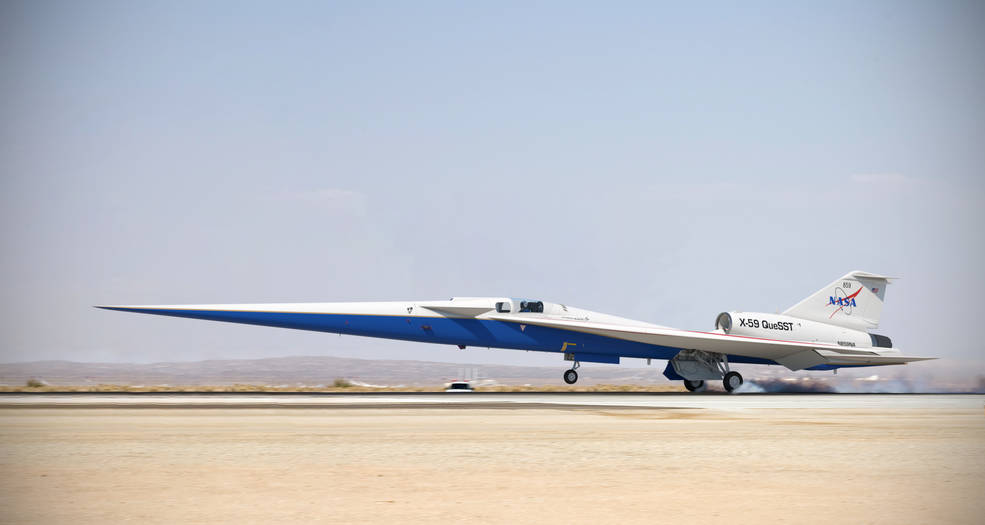
It’s strange to note that commercial air flights have in some ways actually gotten slower over the last fifty years. In 1976, the supersonic Concorde aircraft entered service, ferrying passengers across the Atlantic in half the time of regular aircraft. But a deadly crash in 2000 spelled the end for the iconic plane, and it has been retired since 2003.
During the 70s, the Federal Aviation Authority (FAA) banned flights at speeds above Mach 1 over land due to the noise caused by sonic booms. Supersonic planes like Concord could not operate within the U.S, despite the potential benefits of faster flights.
Now, though, NASA is developing a quieter supersonic aircraft, and the FAA is considering changing its rules to allow supersonic aircraft to fly if they stay below a certain noise threshold.
The aim of NASA’s project is to “[reduce] the loudness of a sonic boom to that of a gentle thump” which would allow supersonic flights to take place over land masses such as the continental U.S. as part of the Low-Boom Flight Demonstration.
The plane NASA is developing for this mission is called the X-59, shaped in a way which reduces sonic boom, and it has just been cleared for final assembly. Now contractor Lockheed Martin can begin construction of the key parts of the plane: The main fuselage, wings, and empennage (tail assembly).
The first phase of this mission is the development of craft, which will be followed by noise testing set for 2022 and 2023. If the noise levels are acceptable, the next two years will be spent seeing how the public reacts to low-boom flights to persuade regulators to allow them. Finally, data will be presented to regulators in 2026, and the regulations may be changed to allow quieter supersonic flights.
The X-59 isn’t the only aircraft NASA is currently working on. There’s also the experimental electric airplane, the Maxwell X-57, which aims to demonstrate how electric aviation technology could be used by commercial airplanes to lessen the environmental impact of flying.
And there’s SOFIA, NASA’s observatory-on-a-plane which uses a modified Boeing jetliner to fly above the water vapor in Earth’s atmosphere in order to detect signals from distant locations which would otherwise be blocked.
These craft are set to be joined by the X-59 once final assembly and integration of the plane’s systems is complete, which is scheduled for late next year.
Editors' Recommendations
- NASA’s experimental electric plane takes ‘major step’ toward first flight
- NASA wants to bring a sample of Mars back to Earth: Here’s the plan
- NASA and SpaceX set new launch date for first operational Crew Dragon flight
- NASA reveals how it intends to bring samples of Mars back to Earth
- SpaceX selected to deliver cargo to NASA’s Lunar Gateway space station




